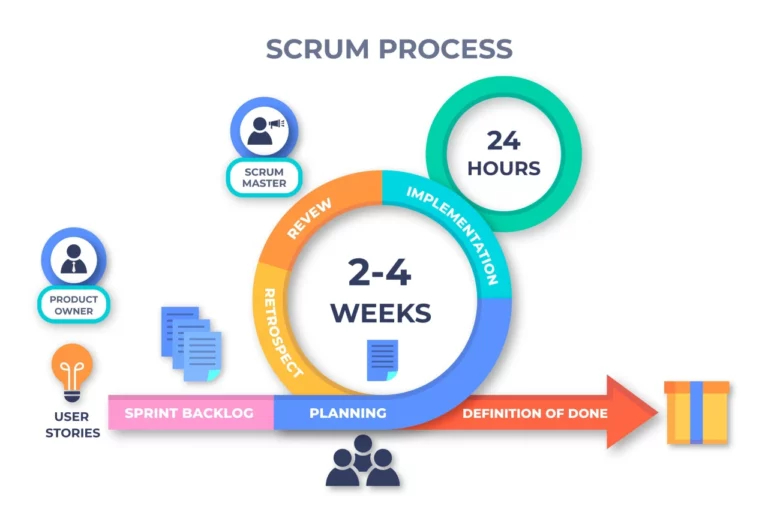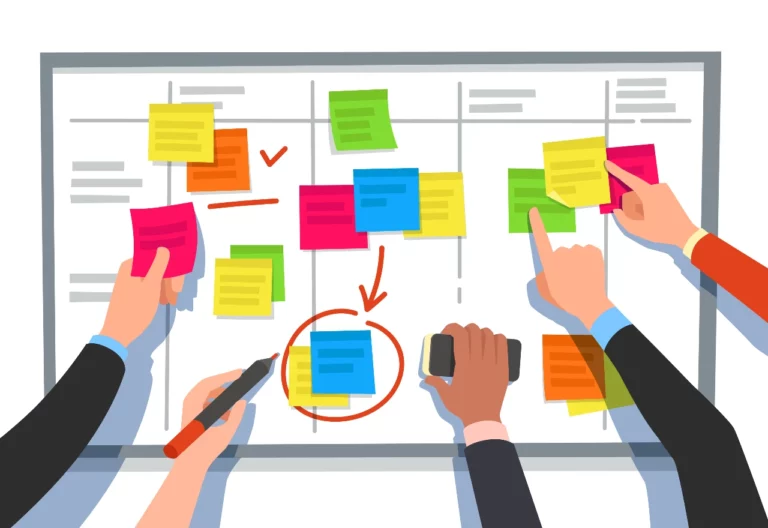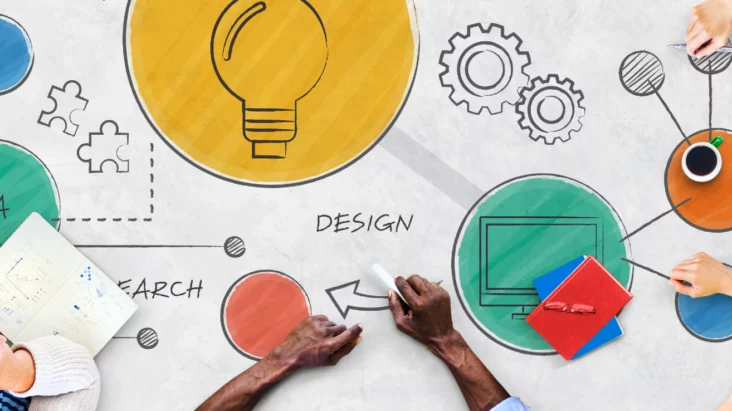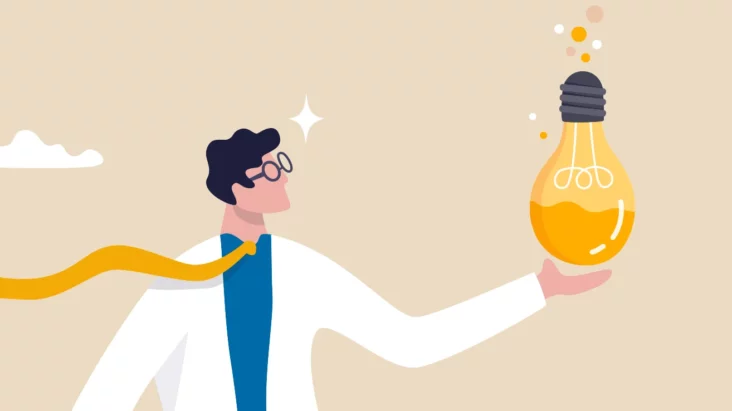In brief:
Combining Scrum and Kanban is becoming an increasingly popular approach for product development, as it offers many advantages such as increased visibility, improved communication, streamlined processes, reduced waste, and greater satisfaction among team members. With the right combination of these two agile methodologies, teams can work smarter instead of harder to achieve maximum efficiency in their projects. In this blog post we’ll explore how combining Scrum and Kanban can help your business succeed by providing a better workflow that lets you keep track of progress while also reducing waste. We’ll also discuss how to make sure you’re making the best decision for your unique situation so you can maximise success!
Product development is an ever-evolving field. As the industry continues to advance, product teams must keep up with the latest trends in order to remain competitive. One trend that has been gaining traction is the combination of two popular product development approaches: Scrum and Kanban. By combining these two approaches, product teams can gain a better understanding of their projects and make more informed decisions about how best to manage them. In this blog post, we’ll take a look at what Scrum and Kanban are, how they differ from each other, and why it makes sense to combine them for maximum efficiency.
What is Scrum?

Scrum is an agile framework that allows teams to work together on complex projects in an organised manner. It emphasises short sprints (or “iterations”) of work followed by reviews and adjustments before moving on to the next sprint. This approach ensures that teams stay focused on the tasks that need to be completed in order for the project to be successful. It also encourages collaboration between team members since everyone involved can provide feedback on each stage of the project as it progresses.
What is Kanban?

Kanban is a lean methodology used to improve workflow efficiency and visibility across all stages of production. It focuses on visualising workflows using boards or cards which contain information about tasks, milestones, deadlines, etc., allowing team members to quickly see where they are in relation to each other within the project timeline. This visualisation helps teams stay organised while ensuring that no task or milestone gets overlooked or forgotten about during development cycles.
Unlock Your Product Potential - Join the Think Product Group Community Today!
AFFILIATE AD
Get ready to join an incredible global network of product enthusiasts! Think Product Group Community is the ultimate platform for aspiring and experienced designers, developers and managers. Here you can take advantage of mentorship, connect with other passionate minds, explore free resources such as how-to videos and templates, and gain hands-on experience through the exclusive ‘Product Pioneers’ program and ‘Product Hack’ live events. Don’t miss out on this amazing opportunity!
Benefits of Using Both Scrum and Kanban Together
The combination of Scrum and Kanban can offer many advantages that are not possible with either approach alone. Below are some of the key benefits that product teams can expect when combining Scrum and Kanban:
1. Increased Efficiency
One of the primary benefits of using both Scrum and Kanban together is that it can lead to increased efficiency. Scrum is used for planning and prioritisation, allowing teams to identify how they want to tackle their tasks and break them down in bite-size chunks. Then, Kanban enters the picture, helping with visualising progress and keeping an eye on the overall progress. The result? Improved workflows that let teams quickly see where they’re headed and what needs to be improved along the way. Putting these two methodologies together means increased efficiency so you can work smarter, not harder!
2. Improved Communication
Another benefit of using both Scrum and Kanban is that it can improve communication among team members. By having a plan set up with Scrum that outlines when specific tasks need to be done, everybody in the team will always be on the same page. Plus, visualisation tools like Kanban can make it easier to spot issues in progress or even where there are potential bottlenecks so they can be solved proactively. So if your team needs a bit more collaboration and smoother order of work, using both Scrum and Kanban together could be the answer.
3. Enhanced Collaboration
In addition to improved communication, using both Scrum and Kanban can also lead to enhanced collaboration among team members. By utilising Scrum, members of the team can craft ideas and get a better understanding of the tasks they need to complete. With Kanban, those same members can track progress and pinpoint areas that may require extra attention. Both approaches become even more effective when used in tandem and teams worldwide are starting to recognise the major benefits this combination of methods provides.
4. Reduced Waste
Another benefit of using both Scrum and Kanban is that it can help to reduce waste. With Scrum, teams can plan out exactly what tasks are necessary and prioritise them, so that less important work doesn’t need to be done at all. And with Kanban, teams get a real-time view of progress and can quickly identify when certain tasks aren’t needed anymore or no longer relevant. This way, teams know exactly how their time and resources are being used, ensuring nothing is wasted in the process.
5. Increased satisfaction
Finally, using both Scrum and Kanban can lead to increased satisfaction among team members. Scrum helps team members feel like they are actively part of the process as they contribute their ideas and opinions, while Kanban makes the progress of a project visible so that everyone can appreciate their hard work. This combined sense of involvement and accomplishment can really boost morale and ensure that team members stay on track with each task.
Making a Decision That’s Right for Your Product Team
Product teams should carefully consider the pros and cons of combining Scrum and Kanban before making a final decision. Combining these two popular approaches to product development can provide teams with an effective way to streamline their workflow and optimise their resources, however there are some potential drawbacks that must be taken into account.
Types of Work
Analyzing Complexity and Incremental Improvements
The most important factor for product teams to consider when deciding whether to combine Scrum and Kanban is the type of work they are doing. If the workload is heavily focused on incremental improvements or continuing existing projects, then Kanban may be more appropriate as it provides a simple workflow that can easily scale up or down depending on the current situation. On the other hand, if the team is working on large projects that require multiple stages or are generally complex in nature, then Scrum may be better suited as it focuses on delivering entire projects within pre-defined timeframes.
Customisation Considerations
Fitting Tools into the Team's Workflow
Another key consideration when combining Scrum and Kanban is how much customisation is needed in order for each approach to work effectively. For example, while both methods have a range of powerful tools available, some may not fit seamlessly into the team’s workflow which could lead to additional work on top of what was initially planned. Additionally, hybrid approaches often require additional training for team members in order for them to understand how everything works together which can take up valuable time and resources.
Keeping Processes Streamlined
Avoiding Unnecessary Overhead and Complexity
Finally, using both Scrum and Kanban can lead to increased satisfaction among team members. Scrum helps team members feel like they are actively part of the process as they contribute their ideas and opinions, while Kanban makes the progress of a project visible so that everyone can appreciate their hard work. This combined sense of involvement and accomplishment can really boost morale and ensure that team members stay on track with each task.
At the end of the day, it’s important for product teams to analyse their needs before combining Scrum and Kanban in order ensure they’re getting the most benefit from their chosen approach with minimal disruption or complexity. With careful planning and implementation, these two methods can deliver powerful results when used together – but only if done correctly!
In conclusion:
Scrum and Kanban are both powerful tools for product teams to utilise when developing a new project. Combining these two agile methodologies can offer numerous advantages such as increased visibility, improved communication, streamlined processes, reduced waste and higher satisfaction amongst team members. However, it is essential that product teams evaluate their unique needs in order to determine the best approach for them. As long as careful consideration is given to any potential drawbacks or complexities which could arise from combining Scrum and Kanban together, then this hybrid approach may be able to provide your business with the perfect solution you need in order to succeed!
What aspect of Scrum and Kanban do you think would be most beneficial to your product team? Leave your answers in the comments below.
Reference Sources
- None








